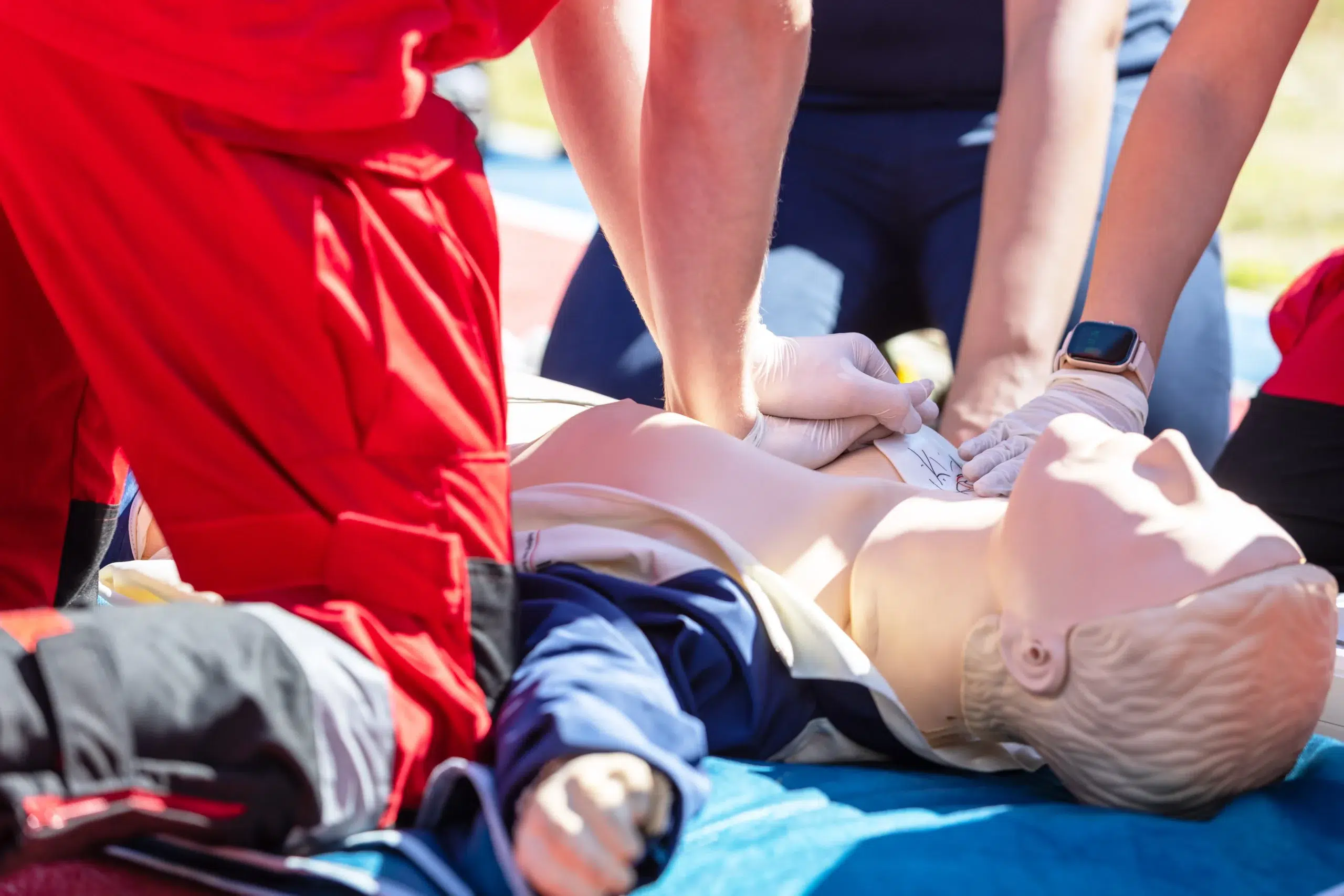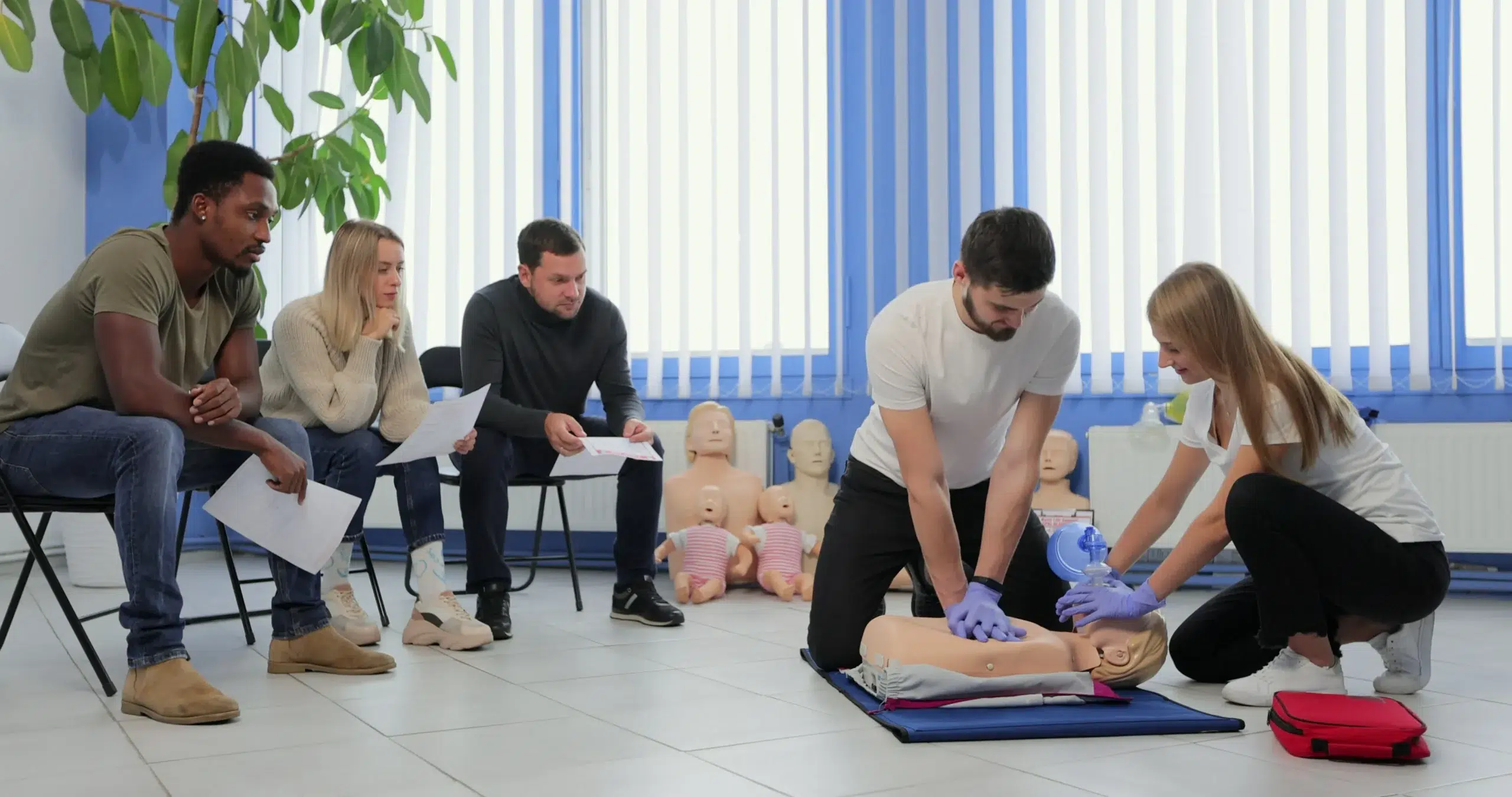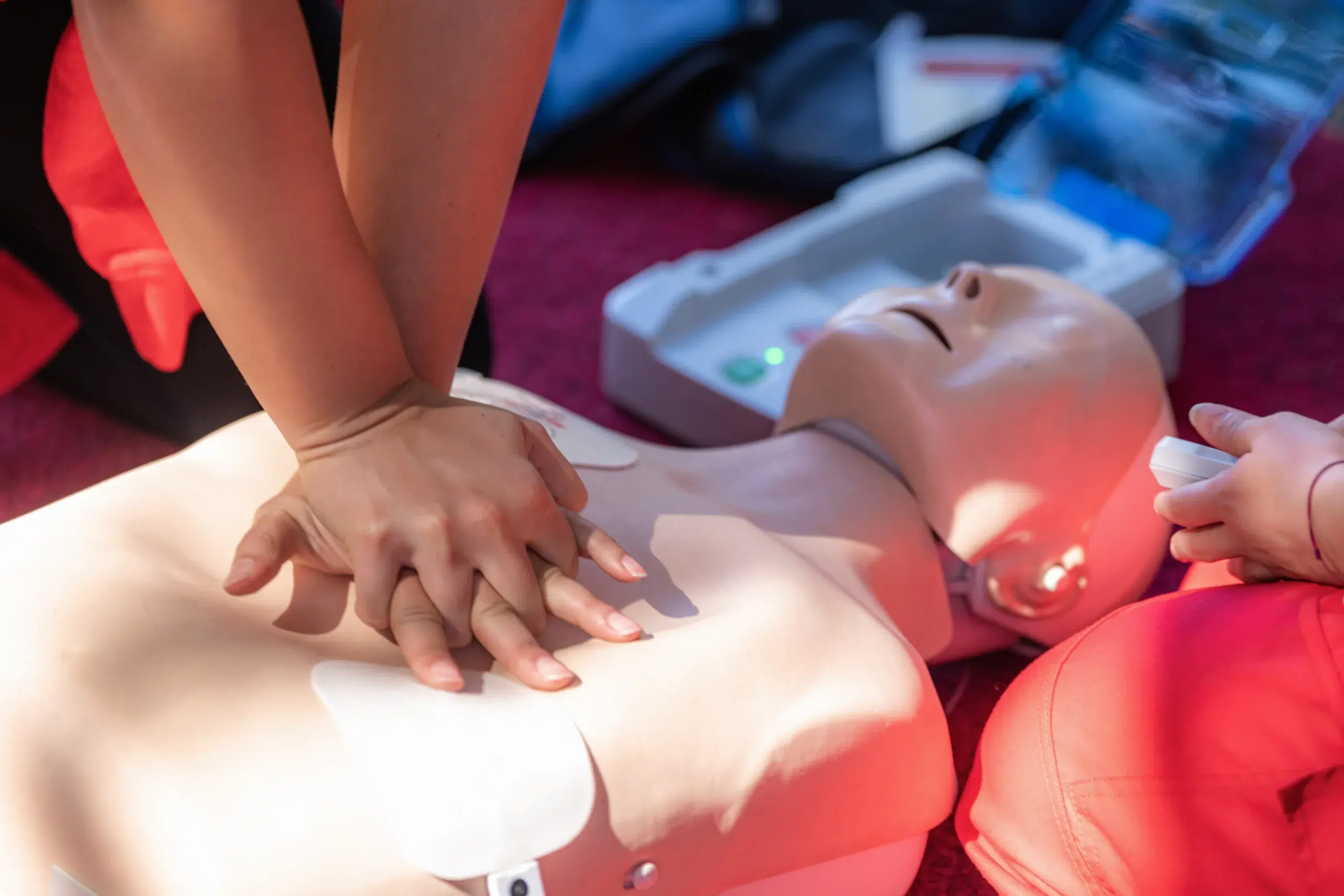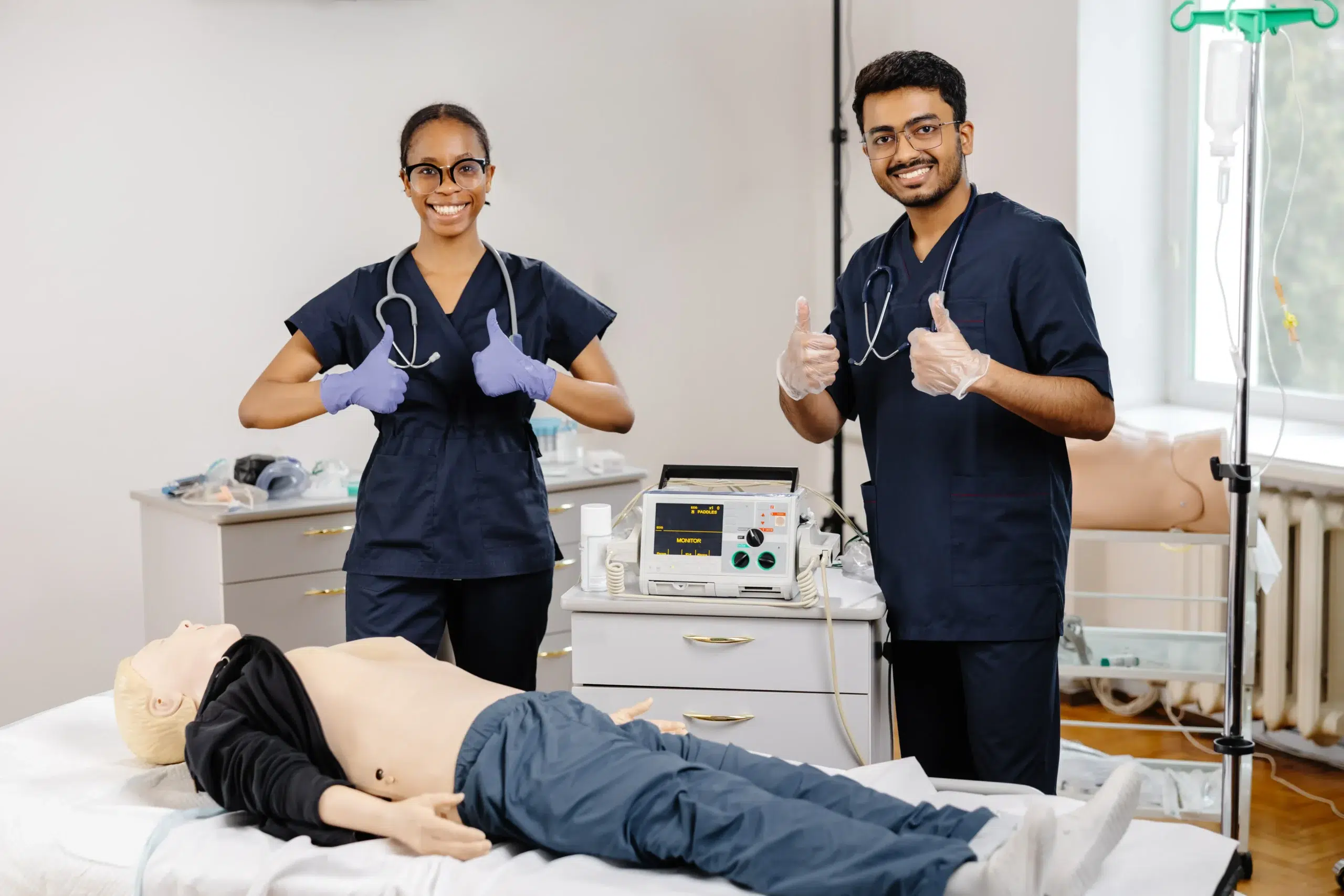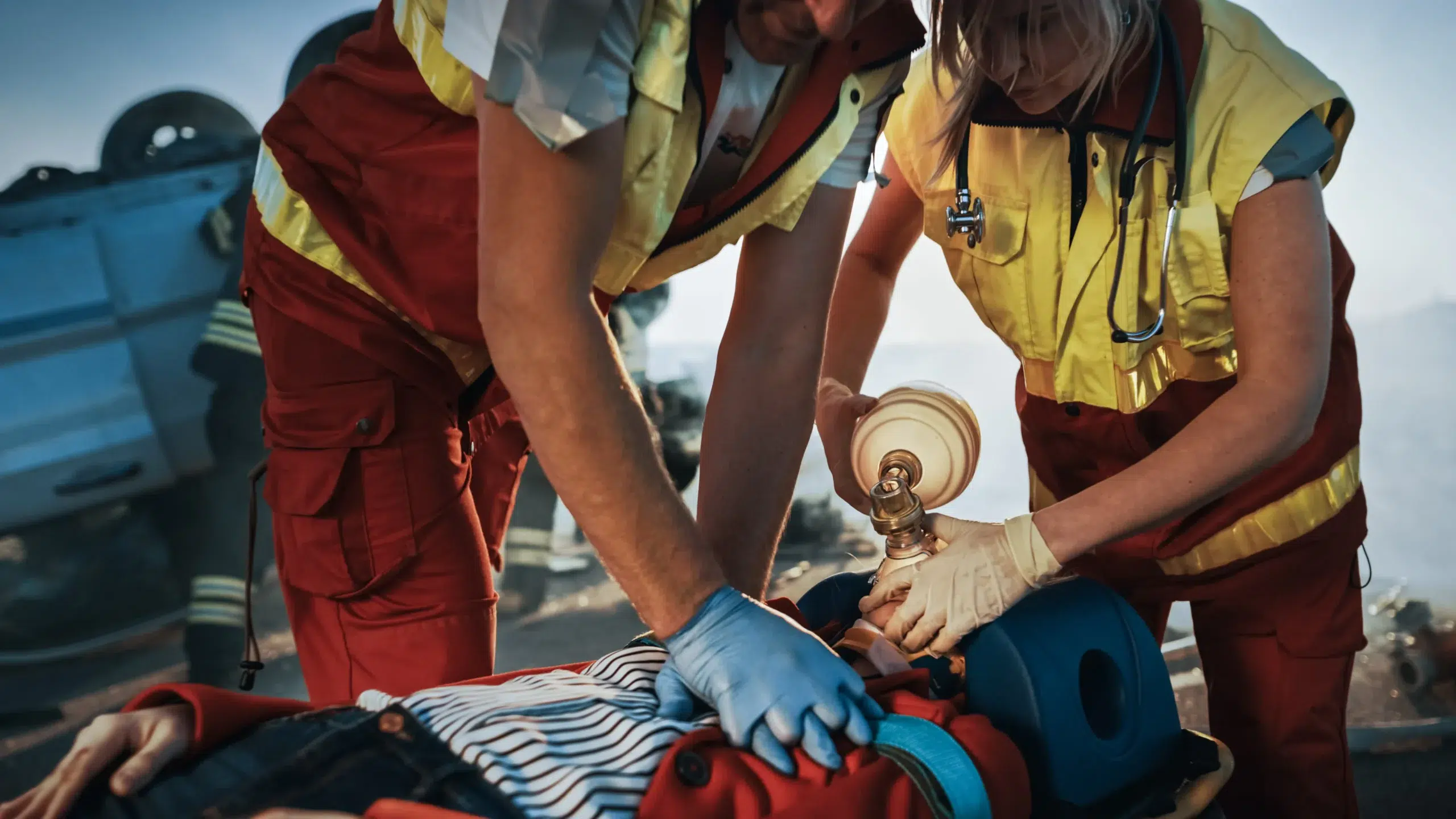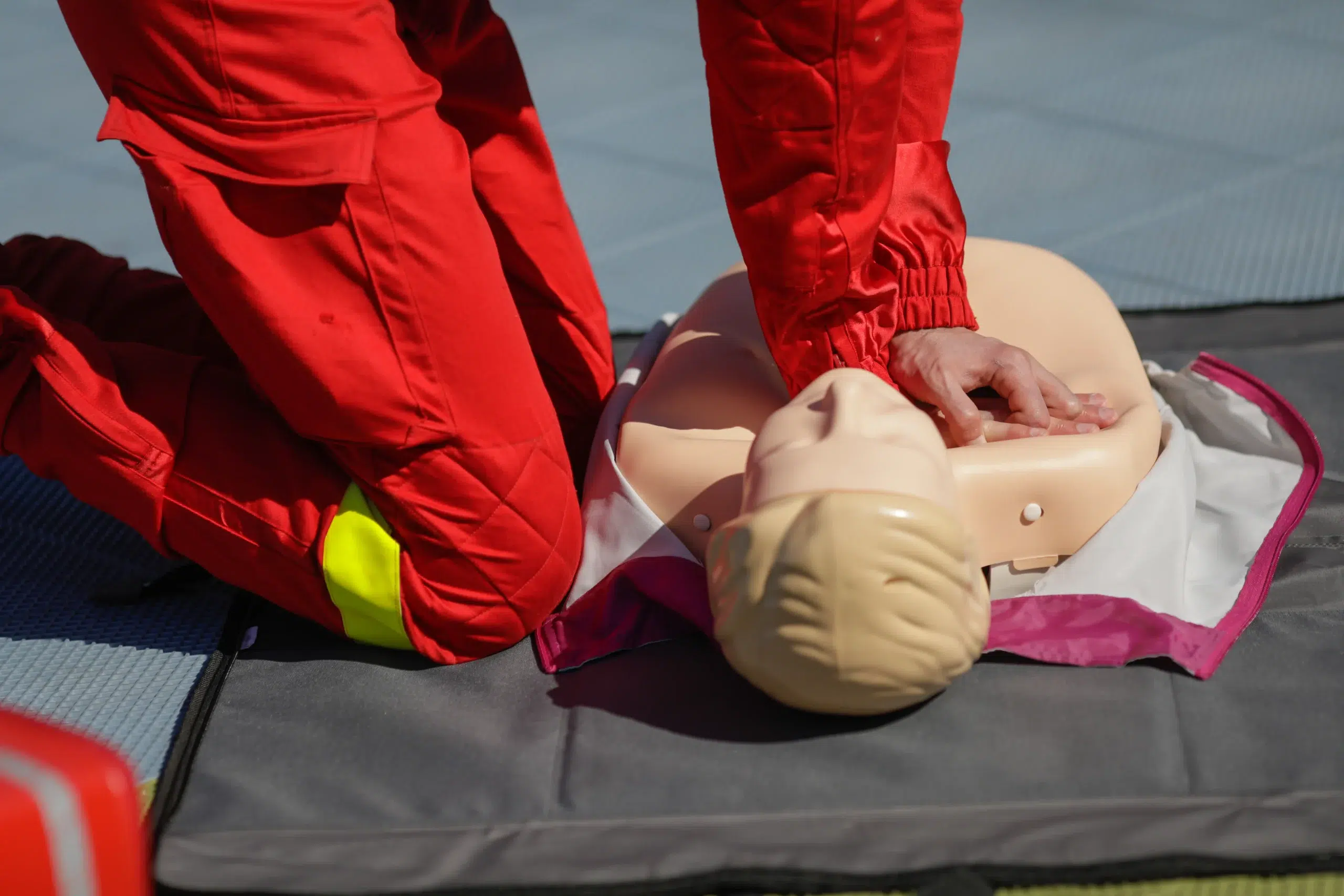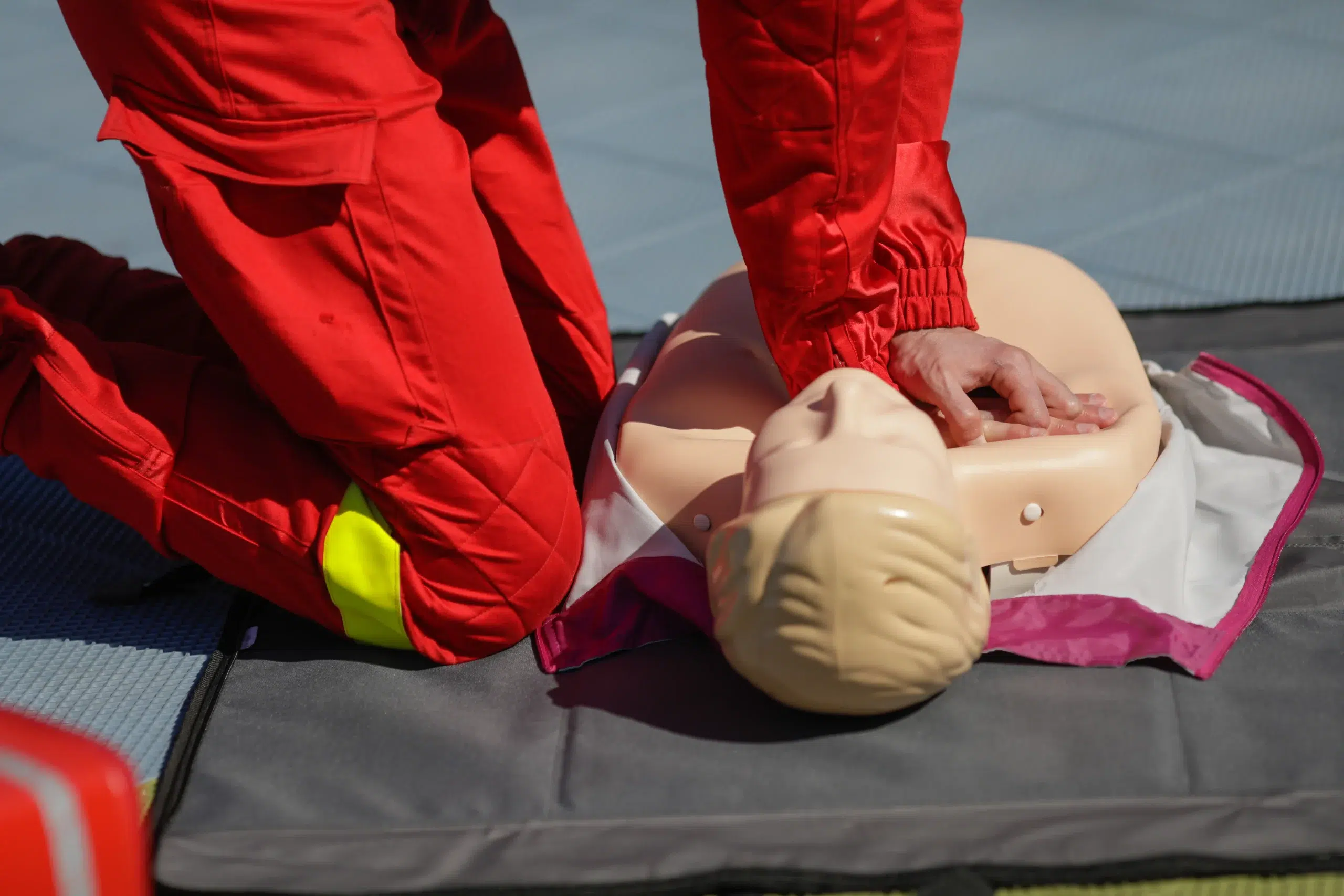Emergencies happen, and being prepared can make all the difference. This comprehensive guide explores the world of CPR and first-aid training in San Jose, offering valuable insights for residents and professionals alike. Whether you’re looking to fulfill a job requirement, enhance your resume, or simply gain the confidence to respond to unexpected situations, this article will help you find the right training program. We’ll cover various CPR and first-aid certifications, discuss leading training providers in San Jose, and address common misconceptions about these life-saving skills. Get ready to empower yourself with the knowledge and skills to make a real impact in your community.
Key Takeaways
- CPR and first aid skills empower you in any emergency: These skills equip you to handle situations ranging from minor injuries to life-threatening events, giving you the confidence to act quickly and effectively when every second counts.
- Find the right training in San Jose that meets your specific needs: Explore various providers, course formats (in-person, online, or blended), and types of certifications to find the perfect match for your schedule, learning style, and budget. Consider factors like the American Heart Association’s RQI program for healthcare professionals or specialized pediatric training for childcare providers.
- Become a more prepared and confident community member: Learning CPR and first aid allows you to make a real difference in your community. These skills are invaluable for anyone, regardless of background, and can significantly impact the outcome of an emergency.
What is CPR and First Aid?
CPR, or cardiopulmonary resuscitation, is a specific procedure used to restore breathing and circulation in someone who has stopped breathing or whose heart has stopped. It involves chest compressions and rescue breaths, working to maintain blood flow to vital organs until professional medical help arrives. CPR follows specific steps to restore breathing and a heartbeat (USCPR Online).
First aid addresses a much wider range of injuries and illnesses. It includes treating minor issues like cuts and burns, as well as managing more serious conditions like fractures or allergic reactions. Think of it as your initial response to any medical situation, providing immediate care before professional help arrives. First aid covers a wide spectrum of immediate medical care (USCPR Online).
Both CPR and first aid training are important for anyone who wants to be prepared for emergencies. Organizations like the Red Cross offer training courses that teach both techniques, emphasizing their practical, life-saving value. Learning these skills will allow you to confidently respond to emergencies and potentially save a life.
Top CPR and First Aid Training Providers in San Jose
Finding the right CPR and First Aid training provider is crucial for receiving quality instruction and proper certification. San Jose offers a variety of options, each with its own strengths. Here’s a look at some of the leading providers in the area:
Safety Training Seminars
Safety Training Seminars offers a comprehensive range of American Heart Association (AHA) certified courses, including BLS, ACLS, PALS, and First Aid. They also offer convenient renewal options like the RQI program for healthcare providers and renewal courses for certifications such as BLS, ACLS, and PALS. Those seeking AHA-certified courses can find a schedule that fits their needs with daily classes. Safety Training Seminars serves San Jose, Santa Clara, and Sunnyvale.
American Red Cross
The American Red Cross provides CPR and First Aid training in San Jose, with options for both in-person classes and blended learning. Their blended Simulation Learning combines online coursework with in-person skills sessions led by certified instructors. This flexible approach allows participants to learn at their own pace while still receiving hands-on training.
Emergency and Health Training Center
The Emergency & Health Training Center offers AHA-certified courses in CPR, BLS, ACLS, PALS, and First Aid. They cater to a diverse range of professionals, from healthcare workers to those in construction and childcare, as well as the general public. The center also offers classes in Spanish and Vietnamese, making their training accessible to a wider community.
AllCPR San Jose
AllCPR San Jose offers both Red Cross-certified CPR courses and AHA Healthcare Provider BLS courses. They focus on equipping participants with the skills and confidence to respond effectively in emergencies. Their programs are suitable for various individuals, including healthcare professionals, teachers, parents, and anyone looking to improve their life-saving skills.
CPR Training Center
CPR Training Center provides a CPR, AED, and Adult First Aid class specifically designed for community rescuers. This hands-on training focuses on preparing participants to handle emergencies effectively within their communities.
CPR and First Aid Courses: A Comprehensive Guide
This section breaks down the various CPR and first aid courses available in San Jose, helping you choose the right one for your needs.
Basic Life Support (BLS)
The BLS course provides healthcare providers and other professionals with the skills and knowledge to perform CPR, use an AED, and relieve choking in adults, children, and infants. BLS certification is often a job requirement for healthcare professionals, including doctors, nurses, paramedics, and other medical personnel. Safety Training Seminars offers a convenient RQI program for BLS certification, allowing medical professionals to renew their certification online, combined with a hands-on skills evaluation.
Advanced Cardiovascular Life Support (ACLS)
The ACLS course is designed for healthcare professionals who direct or participate in the management of cardiopulmonary arrest or other cardiovascular emergencies. This advanced course builds upon the foundational skills learned in BLS and covers topics such as airway management, rhythm recognition, and pharmacology. Safety Training Seminars offers ACLS certification in San Jose.
Pediatric Advanced Life Support (PALS)
PALS is another advanced course specifically for healthcare providers who manage critically ill infants and children. Like ACLS, PALS builds upon the fundamentals of BLS and delves into specialized techniques for pediatric emergencies. Safety Training Seminars offers PALS renewal courses.
Heartsaver CPR AED
Heartsaver CPR AED courses are designed for anyone with limited or no medical training who needs a CPR and AED certification. This course is ideal for community members, teachers, coaches, childcare providers, and other individuals who want to be prepared to respond to emergencies. Consider a Heartsaver CPR AED and First Aid class in San Jose.
First Aid Essentials
First aid courses teach essential skills to manage common injuries and illnesses. These courses cover topics such as wound care, bleeding control, splinting, and recognizing the signs of stroke and heart attack. Obtain your first aid certification through organizations like the Red Cross in San Jose. These courses equip you with the confidence to respond effectively in emergency situations.
Pediatric First Aid and CPR
This specialized course combines pediatric CPR with first aid techniques specifically for infants and children. It addresses the unique needs of young children in medical emergencies, covering topics like choking, fever, and allergic reactions. The Red Cross offers pediatric first aid and CPR training in San Jose, providing parents, caregivers, and childcare providers with valuable skills.
Choose the Right Course Format
Finding the right CPR and First Aid course format depends on your learning style, schedule, and preferences. Let’s explore the most common options available in San Jose: in-person training, online courses, and blended learning. Each has its own advantages, so consider what works best for you.
In-Person Training
In-person CPR training provides hands-on learning and direct interaction with a certified instructor. This format is ideal for those who value personalized attention and thrive in a classroom setting. You’ll have the opportunity to ask questions, receive immediate feedback, and practice skills on mannequins with classmates. This real-time interaction can build confidence and ensure you’re comfortable performing CPR in a real-life emergency. This format is a great option for kinesthetic learners who benefit from tactile experiences.
Online Courses
Online CPR courses offer flexibility and convenience for those with busy schedules or limited access to in-person classes. You can learn at your own pace, revisit materials as needed, and complete the coursework from anywhere with an internet connection. This format often incorporates videos, interactive exercises, and assessments to reinforce learning. The American Heart Association’s RQI program is a popular choice for healthcare professionals seeking online certification for BLS, ACLS, and PALS. It’s a streamlined, efficient way to renew or obtain your certification.
Blended Learning
Blended learning combines the benefits of online learning with the practical application of in-person skills sessions. You’ll complete the coursework online at your own pace, then attend a shorter, in-person session to demonstrate your skills to a certified instructor. This format offers a balance of flexibility and hands-on practice. The Red Cross offers blended learning CPR courses that combine online modules with in-person skill checks. It’s a great option for those who want the convenience of online learning but also value the personalized feedback and guidance of in-person training.
CPR and First Aid Certification: Process and Validity
Getting certified in CPR and First Aid equips you with life-saving skills and often meets workplace requirements. This section clarifies the certification process, its validity, how to renew, and what employers typically look for.
Get Certified: Steps to Follow
Finding a CPR and First Aid class is easier than you think. Reputable organizations like the American Red Cross and Safety Training Seminars offer various courses. Begin by checking their websites or searching online for classes near you in San Jose, Santa Clara, or Sunnyvale. Once you find a class that fits your schedule, register and complete the training. Many providers offer convenient online registration.
How Long is Certification Valid?
CPR and First Aid certifications are typically valid for two years. This standard ensures your skills and knowledge remain current. Check with your certifying organization, such as the American Heart Association, for the specific expiration date of your certification.
Renew Your Certification
Before your certification expires, sign up for a renewal course to refresh your skills and maintain your preparedness for emergencies. Organizations like the American Red Cross, which offer initial certifications, also provide recertification courses. Staying current with your certification demonstrates your commitment to providing assistance when needed.
Employer Recognition
While various organizations offer CPR and First Aid certification, those from the American Heart Association (AHA) are often preferred by employers, especially in healthcare settings. If you’re pursuing a medical career, an AHA certification might be required. Learn more about the differences between AHA and Red Cross certifications to choose the best fit for your career goals. For other professions, confirm which certifications your employer or industry regulations recognize.
CPR and First Aid Training Costs
Knowing the price range for CPR and First Aid training can help you budget effectively. Several factors influence the final cost, so understanding these will help you choose the best option for your needs.
Course Prices
CPR and First Aid training courses in San Jose are available at different price points. You can find combined CPR and First Aid certification ranging from $20 to $35, often with discounts available. If you only need CPR certification, the cost can be less. Safety Training Seminars offers a variety of American Heart Association (AHA) certified courses in CPR, BLS, ACLS, and PALS, plus First Aid and EMSA certifications. Check our website for current pricing.
Factors Affecting Cost
Several factors influence course costs. The certifying organization is a key factor. AHA certification, often preferred by healthcare employers, may have different pricing than other organizations. The course type also matters; advanced courses like ACLS or PALS generally cost more than basic CPR and First Aid. Finally, the course format (in-person, online, or blended) can also affect the price.
Discounts and Group Rates
Look for ways to save on training costs. Many providers, including Safety Training Seminars, offer group discounts, a great option for workplaces or community organizations training multiple people. You might also find seasonal promotions or discounts for specific groups. Check with the training center for their latest offers. Some organizations offer discounts on training supplies. Always ask about potential discounts when you register. Safety Training Seminars offers a low price guarantee, ensuring competitive pricing.
Tailor Your CPR and First Aid Training
Finding the right CPR and first aid training in San Jose depends on your specific needs. Whether you’re a healthcare provider, work in childcare, want to improve workplace safety, or simply want to be prepared, there’s a course designed for you.
For Healthcare Professionals
Healthcare professionals in San Jose can maintain their certifications through the American Heart Association’s Resuscitation Quality Improvement (RQI) program. This program offers a flexible and convenient way to renew BLS, ACLS, and PALS certifications with online learning modules and in-person skills sessions. Safety Training Seminars offers the RQI program, allowing you to stay current with the latest guidelines. Learn more about their RQI program and maintain your certifications with ease.
For Childcare Providers
For those working in childcare, pediatric CPR and first aid training is essential. The American Red Cross offers a comprehensive program designed for childcare providers, covering CPR, first aid, and AED training for infants and children. They also offer resources for schools through their Schools Program, helping create safer school environments and equipping teachers with essential emergency response skills.
For Workplace Safety
Creating a safe work environment is a top priority for any business. CPR and first aid training empowers your employees to respond effectively to medical emergencies. Providers like CPR Training Center offer courses tailored to various industries, ensuring your team has the skills to handle workplace incidents. Explore their CPR and first aid training options and prioritize workplace safety.
For Families and Individuals
Even without specific professional requirements, learning CPR and first aid is a valuable skill. In-person classes offer hands-on practice and personalized instruction, building your confidence to respond to emergencies involving adults, children, and infants. The Red Cross offers first aid courses that cover essential life-saving techniques, empowering you to be prepared for any situation.
What to Expect in Class
Getting ready for your CPR or first aid class? Here’s a glimpse of what you can expect, from the length of the course to the hands-on training you’ll receive. We want you to feel prepared and confident walking through the door.
Course Duration
First aid certification courses in San Jose typically take just a few hours to complete. CPR courses also have varying durations depending on the certification level you’re pursuing (like BLS, ACLS, or PALS). Check with your chosen provider, like Safety Training Seminars, for specifics. Knowing the time commitment upfront helps you plan accordingly.
Hands-On Practice
CPR and first aid classes aren’t just lectures. Expect plenty of hands-on practice. You’ll work with training manikins and other equipment in small group settings, providing ample opportunities to build your skills. This practical experience develops the muscle memory and confidence you need to respond effectively in a real emergency. Many classes, including those offered by the American Red Cross, are led by expert instructors who provide personalized attention and answer questions.
Instructor Qualifications
Your instructors will be certified professionals with extensive experience in CPR and first aid techniques. They’ll guide you through the course material, demonstrate proper techniques, and provide feedback. Look for training centers like AllCPR San Jose that emphasize experienced instructors. A knowledgeable instructor makes all the difference.
Provided Materials
Most CPR and first aid courses provide the materials you need, often including manuals and access to online resources. These resources can be valuable for reviewing key concepts after class and refreshing your knowledge later. The Red Cross, for example, supplements its in-person training with online materials. Having these resources readily available helps reinforce what you learn.
Debunking CPR and First Aid Myths
It’s easy to fall prey to misconceptions about CPR and first aid. Let’s clear up some common myths so you can make informed decisions about your training.
CPR is Only for Adults
This is absolutely false. CPR can be life-saving for people of all ages, including infants and children. The techniques may vary slightly depending on the age group, but the core principles remain the same. Don’t hesitate to perform CPR on anyone who needs it, regardless of their age. Our CPR and First Aid courses teach age-appropriate techniques.
First Aid is Only for Serious Injuries
First aid covers everything from minor cuts and scrapes to more serious injuries. Even seemingly small injuries benefit from prompt first aid, which can prevent infection or further complications. Knowing basic first aid helps you manage any situation until professional medical help arrives. Our first aid training covers everyday injuries and more critical scenarios.
Only Healthcare Professionals Can Perform CPR
While healthcare professionals regularly use CPR, it’s a skill accessible to everyone. Learning CPR empowers anyone to respond effectively in an emergency. In fact, bystander CPR can significantly increase someone’s chances of survival before professional help arrives. Safety Training Seminars offers CPR certification courses for everyone, regardless of background.
CPR Always Saves Lives
CPR is a powerful tool, but it’s not a guaranteed life-saver. Its effectiveness depends on several factors, including the underlying cause of the cardiac arrest and how quickly CPR is started. However, even if CPR doesn’t restart the heart, it can circulate oxygenated blood to vital organs, increasing the chances of a successful resuscitation once medical professionals arrive. Learn more about the realities and benefits of CPR in our BLS certification course.
First Aid Training is Unnecessary
Knowing first aid can make a real difference in an emergency. It equips you with the skills to assess situations, control bleeding, manage injuries, and provide basic life support until professional help arrives. This knowledge empowers you to act confidently and potentially save a life. Explore our first aid courses to learn essential, life-saving skills.
Why San Jose Residents Should Learn CPR and First Aid
Knowing CPR and first aid can make a real difference in emergencies. It empowers you to act quickly and effectively when every second counts, whether at home, at work, or out in the community. Here’s why learning these skills is so important for San Jose residents:
Prepare Your Community
Learning CPR and first aid equips you with the skills to respond to emergencies, making your community safer. The more trained individuals in San Jose, the better prepared the entire community is as a whole. The American Red Cross offers a variety of first aid courses designed to teach people how to help in emergencies, strengthening community preparedness. These skills can be invaluable in any situation, from everyday mishaps to larger-scale emergencies.
Meet Workplace Requirements
Many jobs require CPR and first aid certification to maintain a safe work environment. Check with your employer—they might offer training or reimburse you for taking a CPR class. These certifications can also strengthen your resume and open doors to new career opportunities. The Red Cross highlights that these courses often meet OSHA requirements, making them valuable for both personal and professional growth.
Build Confidence in Emergencies
CPR and first aid training not only teaches you essential skills but also builds your confidence to use them. Knowing you can handle an emergency helps you stay calm and focused under pressure. The small class settings and expert instructors at the Red Cross create a supportive learning environment where you can ask questions and get personalized attention. This personalized approach ensures you feel truly prepared to respond effectively in a real-life emergency.
Contribute to Public Safety
By learning CPR and first aid, you become an active participant in public safety. You’re not just a bystander; you’re someone who can step in and provide immediate assistance when it’s needed most. Whether it’s a minor injury or a life-threatening situation, your skills can make a significant impact. The Red Cross emphasizes the importance of first aid as a valuable life skill, empowering individuals to respond effectively in emergencies and contribute to a safer community. Learning these skills means you’re ready to help, wherever you are.
Related Articles
- CPR Training in Santa Clara: Your Complete Guide – San Jose CPR Classes
- CPR Classes in San Jose: Your Complete Guide – San Jose CPR Classes
- San Jose CPR Certification: Your Complete Guide – San Jose CPR Classes
- Protect Your Workplace with CPR & First-Aid Training
- CPR Myths You Need to Stop Believing – San Jose CPR Classes
Frequently Asked Questions
What’s the difference between CPR and First Aid? CPR focuses specifically on restoring breathing and circulation when someone’s heart or breathing has stopped. First aid is broader, encompassing a wider range of immediate medical care for various injuries and illnesses, from minor cuts to more serious conditions. Think of CPR as a very specific tool within the larger toolkit of first aid.
Which CPR/First Aid certification is right for me? The best certification depends on your situation. Healthcare providers often need BLS, ACLS, or PALS certification. If you’re not in healthcare but work with children, a pediatric CPR and first aid course is a good choice. For general preparedness, a basic CPR/First Aid certification is excellent. Consider your job, family needs, and comfort level when choosing.
How do I find a CPR/First Aid class in San Jose? Several organizations offer training, including Safety Training Seminars, the American Red Cross, and others mentioned in the blog post. Check their websites or search online for “CPR classes near me” to find options in San Jose, Santa Clara, and Sunnyvale. Look for classes that fit your schedule and preferred learning format (in-person, online, or blended).
How much does CPR/First Aid training cost, and are there discounts? Costs vary depending on the certifying organization, the type of course, and the format. Expect to pay anywhere from $75 to $150 or more for combined CPR and First Aid certification. Many providers offer discounts for groups, students, or returning customers. Always ask about potential discounts when you inquire about classes. Safety Training Seminars offers a low price guarantee, so check their website for competitive pricing.
What can I expect during a CPR/First Aid class? Classes typically involve a combination of instruction and hands-on practice. You’ll learn the steps for CPR, how to use an AED, and various first aid techniques. Expect to practice on mannequins and other training equipment. Instructors will guide you through scenarios and provide feedback. Most classes provide materials like manuals or online resources to help you review and retain the information.


